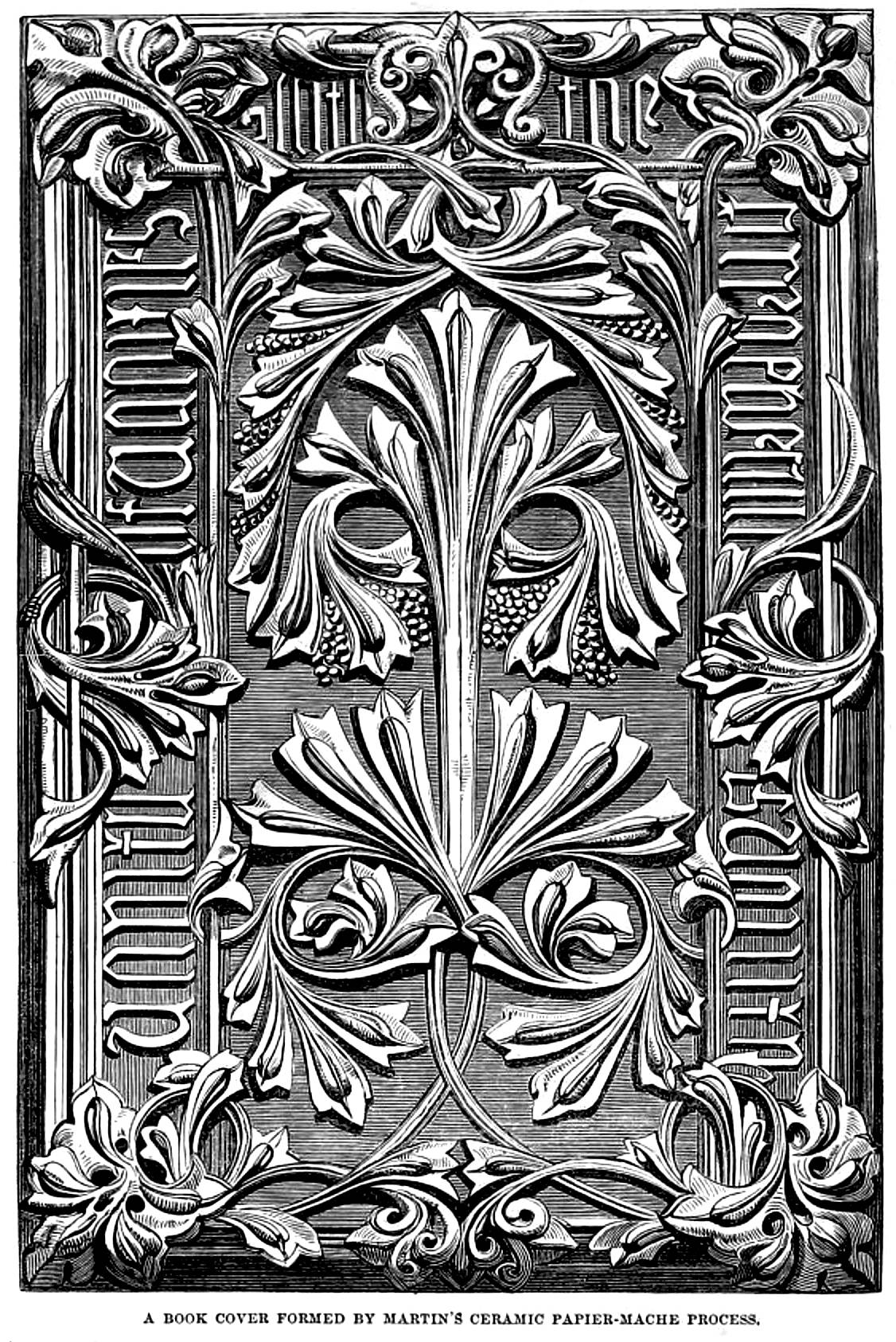Papier mâché binding
After Owen Jones
[1860, after a book of 1849]
A papier mâché version of the wooden binding on Owen Jones’s The Preacher, produced using a new technology of the 1860s. The cover shown here reproduces the legend written around the border, but lacks the title.
11 x 8 inches
Source: Illustrated London News. See below for text of accompanying article.
[Click on image to enlarge it.]
You may use this image without prior permission for any scholarly or educational purpose as long as you (1) credit the Hathi Trust and The University of Michigan Library and (2) link your document to this URL in a web document or cite the Victorian Web in a print one. George P. Landow
Ceramic Papier Mâché: A Plastic Substitute for Wood Carving
We have had our attention drawn to a new description of plastic fibrous material, which appear to us, from specimens we have seen, and from the nature of its composition, to be capable of being most advantageously and economically manufactured into a numerous class of articles of high artistic merit.
This invention, which has been patented by Mr. J. C. Martin, of Barnes, has for its object the production in a plastic material of imitations of wood carving from which it is scarcely distinguishable, and that could be readily moulded, subsequently hardening into a close-grained, hard, tough, and durable substance, resembling wood, admitting of an after process of carving to produce the undercuts, and susceptible of the highest finish. The grain of various woods may be very exactly imitated by a proper and careful mixture of differently-coloured portions of the substance. The material of which this new substance is chiefly composed is paper, or rather the fibrous pulp of which paper is made, combined – among various other ingredients, with a resinous soap (that is, resin dissolved in alkali), to which is due its plastic qualities, and which enables it to be moulded, without the addition of an earthy or claylike substance, adds to its strength, and admits of the subsequent process of carving. We engrave the cover of a book manufactured of this material from a design, not unknown, to illustrate, in some degree, the exactness with which a wood carving may be imitated; and we have seen this material manufactured into highly-carved miniature-frames, blotting-book covers, inkstands, and architectural ornaments. Considering this new plastic substance as an improvement on the ordinary methods of manufacturing articles in papier-mâché or fibrous pulp – a material daily occupying more the attention of the manufacturer – and as a means of increasing the facilities for the reproduction of artistic articles of elegant design, as well as for the economical enrichment and decoration of interiors of buildings, we, from a close examination of the specimens we have seen, believe that this new manufacture will prove in every way a complete commercial success.
References
“Ceramic Papier Mâché: A Plastic Substitute for Wood Carving.” Illustrated London News (29 September 1860): 291. span class="website">Hathi Trust online version of a copy in The University of Michigan Library. Web. 30 November 2015.
Jones, Owen. The Preacher. London: Longman, 1849; papier mâché version, 1860.
Victorian
Web
Visual
Arts
Design
Book
Design
Created 30 November 2015
